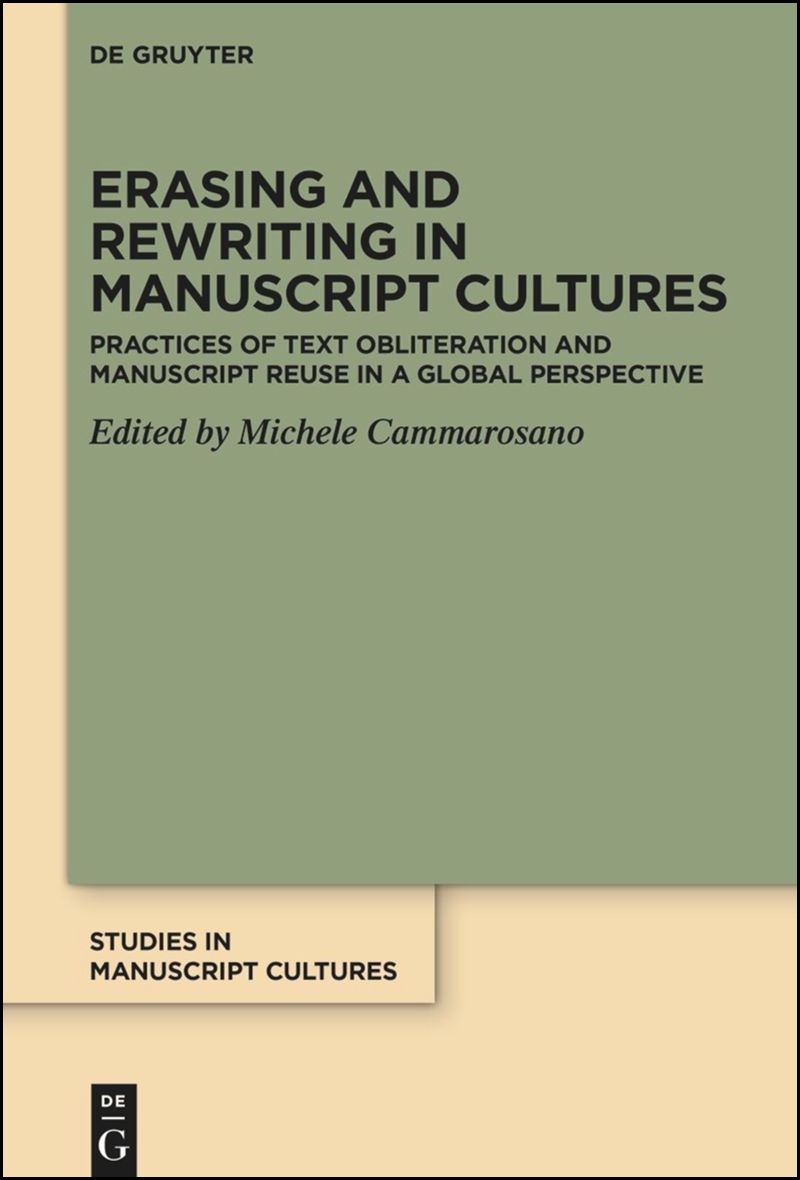SMC 48

Erasing and Rewriting in Manuscript Cultures
Practices of Text Obliteration and Manuscript Reuse in a Global Perspective
Edited by Michele Cammarosano
Across the most diverse societies, the reuse of writing surfaces in contexts such as learning to write, note-taking, literary creation, and bookkeeping has been not only desirable but essential to optimising resources. In these contexts, it has been typical to use erasable media of various kinds – a practice which in turn has had important implications for palaeography, literary creation, and virtually every aspect related to writing. Manuscript cultures addressed the quest for rewritability through using permanently recyclable materials such as clay and wax tablets, special technologies such as erasable coatings, and ingenious strategies for reusing papyrus, parchment, paper, wood, and more. This volume systematically explores the fascinating intersection between the potential ephemerality of the written word and the reusability of its supports. It combines a theoretical framework on ‘rewritability’ with case studies on materials, related technologies and their interplay with competing techniques, spanning from ancient Mesopotamia to present-day Nigeria, from Egypt to Japan, from Greece and Rome to the Arab world. In doing so, the volume illuminates a crucial aspect of cultural history relevant to anyone studying the written word.
FrontmatterI
ContentsV
A Framework for the Analysis of Rewriting Practices, and Three Case Studies: Clay Tablets, Wax Tablets, and Erasable Coatings1
Michele Cammarosano
The Future of the Past: Rewriting as a Cultural Practice from Handwritten Artefacts to the Digital Age63
Marilena Maniaci
CLAY AND WAX
A Restorer’s Look at Rewritable Media: Cuneiform Clay Tablets in Conservation75
Carmen Gütschow
Temporality on Clay Tablets: When the Component Parts of a Cuneiform Document Were Committed to Clay115
Jon Taylor
Erasing Signs and Lines on Old Assyrian Cuneiform Clay Tablets161
Cécile Michel
Ashurbanipal and Objects for Esagil and Ešarra: A Case Study of Erasing, Removing, and Replacing Texts at the Height of the Assyrian Empire191
Jamie Novotny
Refill, Reuse, Recycle? Reusing Wax Tablets in the Roman North-western Provinces217
Anna Willi
Some Remarks on the Lexicon of Erasure between Antiquity and Middle Ages255
Serena Ammirati
From Wax Tablets to Codices: The Possible Influence of the Stylus Holder on the Structure of Early Multi-gathering Codices263
Georgios Boudalis
Wax Tablets as Writing Media during the Middle Ages309
Thomas Wozniak
PAPYRUS, PARCHMENT, PAPER, AND WOOD
Reasons for Papyrus Reuse in Ancient Egypt335
Elena L. Hertel
Coptic Palimpsests: When, Where, and Why?357
Paola Buzi
How to Erase Writing According to Recipes from the Arab World: Textual Analysis of Premodern Technical Recipes373
Sara Fani
How to Erase Writing According to Recipes from the Arab World: Replication and Analytical Report411
Claudia Colini, Giuseppe Marotta, Sowmeya Sathiyamani, Valentina Yañez Langner, Annie Muller, Katerina Grigoriadou und Chen Yu
Transient Texts: Erasable Writing on Wood, Sand, and Metal in Northern Nigerian Islam439
Andrea Brigaglia und Dahir Lawan Mu’az
Writing and Rewriting Wooden Tablets in Seventh- and Eighth-Century Japan: The Mokkan Used for Learning475
Antonio Manieri
Contributors503
Index of Written Artefacts
